Jinglong Gao
Enhancing Complex Causality Extraction via Improved Subtask Interaction and Knowledge Fusion
Aug 06, 2024
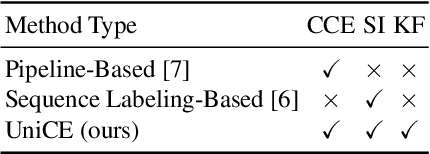
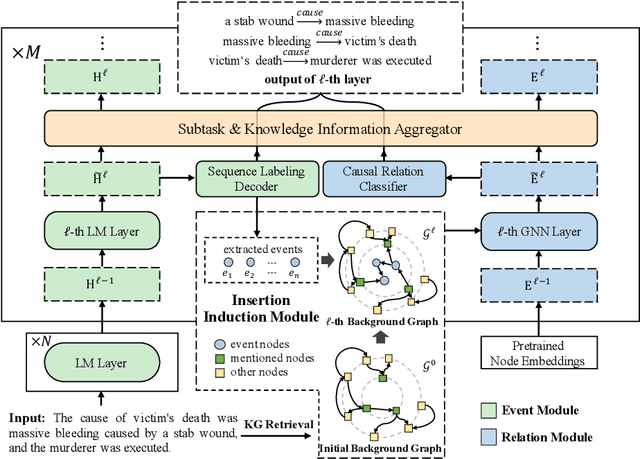
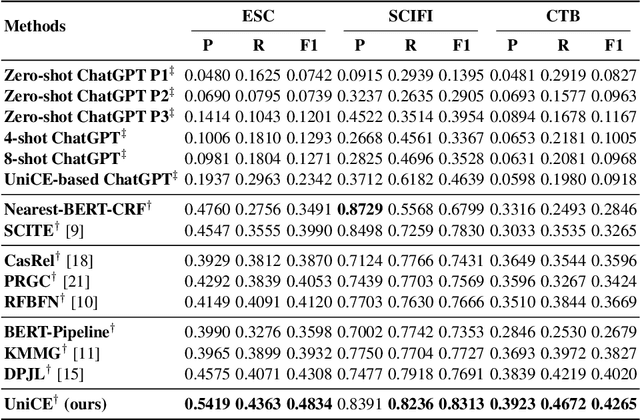
Abstract:Event Causality Extraction (ECE) aims at extracting causal event pairs from texts. Despite ChatGPT's recent success, fine-tuning small models remains the best approach for the ECE task. However, existing fine-tuning based ECE methods cannot address all three key challenges in ECE simultaneously: 1) Complex Causality Extraction, where multiple causal-effect pairs occur within a single sentence; 2) Subtask~ Interaction, which involves modeling the mutual dependence between the two subtasks of ECE, i.e., extracting events and identifying the causal relationship between extracted events; and 3) Knowledge Fusion, which requires effectively fusing the knowledge in two modalities, i.e., the expressive pretrained language models and the structured knowledge graphs. In this paper, we propose a unified ECE framework (UniCE to address all three issues in ECE simultaneously. Specifically, we design a subtask interaction mechanism to enable mutual interaction between the two ECE subtasks. Besides, we design a knowledge fusion mechanism to fuse knowledge in the two modalities. Furthermore, we employ separate decoders for each subtask to facilitate complex causality extraction. Experiments on three benchmark datasets demonstrate that our method achieves state-of-the-art performance and outperforms ChatGPT with a margin of at least 30% F1-score. More importantly, our model can also be used to effectively improve the ECE performance of ChatGPT via in-context learning.
Self-Evolving GPT: A Lifelong Autonomous Experiential Learner
Jul 12, 2024Abstract:To improve the performance of large language models (LLMs), researchers have explored providing LLMs with textual task-solving experience via prompts. However, they rely on manual efforts to acquire and apply such experience for each task, which is not feasible for the growing demand for LLMs and the variety of user questions. To address this issue, we design a lifelong autonomous experiential learning framework based on LLMs to explore whether LLMs can imitate human ability for learning and utilizing experience. It autonomously learns and accumulates experience through experience transfer and induction, categorizing the types of input questions to select which accumulated experience to employ for them. Experimental results on six widely used NLP datasets show that our framework performs reliably in each intermediate step and effectively improves the performance of GPT-3.5 and GPT-4. This validates the feasibility of using LLMs to mimic human experiential learning and application capabilities. Additionally, we provide a detailed analysis of the behavior of our framework at each step.
Towards Generalizable and Faithful Logic Reasoning over Natural Language via Resolution Refutation
Apr 03, 2024



Abstract:Large language models (LLMs) have achieved significant performance in various natural language reasoning tasks. However, they still struggle with performing first-order logic reasoning over formal logical theories expressed in natural language. This is because the previous LLMs-based reasoning systems have the theoretical incompleteness issue. As a result, it can only address a limited set of simple reasoning problems, which significantly decreases their generalization ability. To address this issue, we propose a novel framework, named Generalizable and Faithful Reasoner (GFaiR), which introduces the paradigm of resolution refutation. Resolution refutation has the capability to solve all first-order logic reasoning problems by extending reasoning rules and employing the principle of proof by contradiction, so our system's completeness can be improved by introducing resolution refutation. Experimental results demonstrate that our system outperforms previous works by achieving state-of-the-art performances in complex scenarios while maintaining performances in simple scenarios. Besides, we observe that GFaiR is faithful to its reasoning process.
Is ChatGPT a Good Causal Reasoner? A Comprehensive Evaluation
May 18, 2023Abstract:Causal reasoning ability is crucial for numerous NLP applications. Despite the impressive emerging ability of ChatGPT in various NLP tasks, it is unclear how well ChatGPT performs in causal reasoning. In this paper, we conduct the first comprehensive evaluation of the ChatGPT's causal reasoning capabilities. Experiments show that ChatGPT is not a good causal reasoner, but a good causal interpreter. Besides, ChatGPT has a serious hallucination on causal reasoning, possibly due to the reporting biases between causal and non-causal relationships in natural language, as well as ChatGPT's upgrading processes, such as RLHF. The In-Context Learning (ICL) and Chain-of-Though (COT) techniques can further exacerbate such causal hallucination. Additionally, the causal reasoning ability of ChatGPT is sensitive to the words used to express the causal concept in prompts, and close-ended prompts perform better than open-ended prompts. For events in sentences, ChatGPT excels at capturing explicit causality rather than implicit causality, and performs better in sentences with lower event density and smaller lexical distance between events.
DiscrimLoss: A Universal Loss for Hard Samples and Incorrect Samples Discrimination
Aug 21, 2022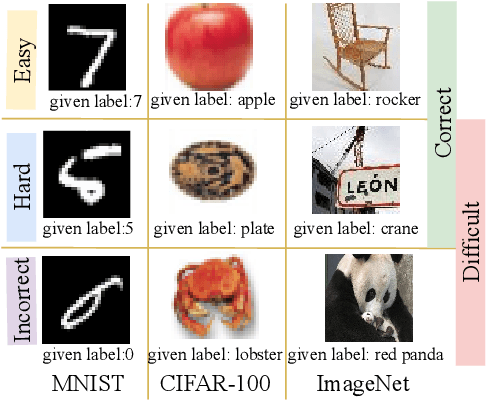
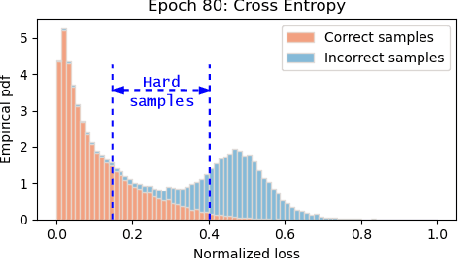
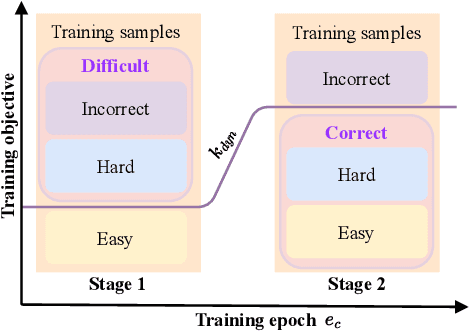
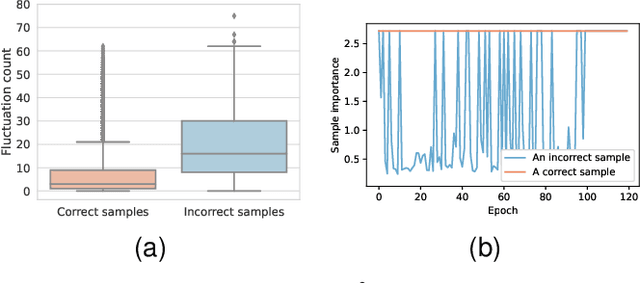
Abstract:Given data with label noise (i.e., incorrect data), deep neural networks would gradually memorize the label noise and impair model performance. To relieve this issue, curriculum learning is proposed to improve model performance and generalization by ordering training samples in a meaningful (e.g., easy to hard) sequence. Previous work takes incorrect samples as generic hard ones without discriminating between hard samples (i.e., hard samples in correct data) and incorrect samples. Indeed, a model should learn from hard samples to promote generalization rather than overfit to incorrect ones. In this paper, we address this problem by appending a novel loss function DiscrimLoss, on top of the existing task loss. Its main effect is to automatically and stably estimate the importance of easy samples and difficult samples (including hard and incorrect samples) at the early stages of training to improve the model performance. Then, during the following stages, DiscrimLoss is dedicated to discriminating between hard and incorrect samples to improve the model generalization. Such a training strategy can be formulated dynamically in a self-supervised manner, effectively mimicking the main principle of curriculum learning. Experiments on image classification, image regression, text sequence regression, and event relation reasoning demonstrate the versatility and effectiveness of our method, particularly in the presence of diversified noise levels.
 Add to Chrome
Add to Chrome Add to Firefox
Add to Firefox Add to Edge
Add to Edge